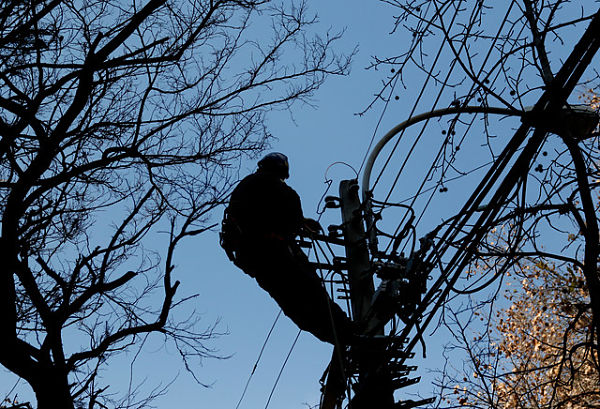She describes the different kinds of magazines, their stories and readerships, and the new genres the emerged at the time, including confessional pieces, articles about family and popular trends, and advice columns. Japan’s post WWII occupation changed gender roles through legal and social reforms. WWII expunged the feudal system and the new Japanese Constitution prohibited discrimination based on gender. In addition, American perceptions of public displays of affection, style, and morals changed how Japanese men and women interacted with each other. Gender roles blended with Japanese tradition and modern American attitudes.
- Some women served as samurai, a role in which they were expected to be loyal and avenge the enemies of their owners.
- The efforts in Japan are intended to overcome decades of unkept promises from political and business leaders to increase opportunities for Japanese women, who face some of the starkest inequality in the developed world.
- The 6 month ban on remarriage for women was previously aiming to “avoid uncertainty regarding the identity of the legally presumed father of any child born in that time period”.
- Population aged 15 years old and over by labour force status, status in employment, type of employment , duration of employment contract, and agri-/non-agriculture .
Japan’s family dynamics have historically been defined by a two-person, female housewife or caregiver role and a male income-earner role, a historically common division of labor between the sexes. After Japan’s involvement in World War II ended, the resulting Japanese Constitution included Article 24, “the Gender Equality Clause,” which was introduced to steer the country towards gender equality. However, deeply-embedded family and gender norms led to resistance among citizens, and the culture remained largely the same as of 2009.
Modern Japan stresses harmony and devotion, themes that women historically exemplified more than men in Japanese society. However, this pattern is gradually shifting, as young women pursue careers and stray from a traditional focus on marriage and motherhood. The labor force participation rate is a valuable but limited economic measure. All labor force involvement—part-time or full-time, low- or high-paying—is given equal weight when calculating the fraction of the population that is employed or searching for work. This limitation is especially important when comparing women working in Japan and the United States.
Professional life
The growing pressures to appoint female directors have created an opportunity for Ms. Koshi’s firm. Japanese women face some of the starkest inequality in the developed world. Instead, it called for companies to renew their efforts to achieve the 30 percent goal by the end of the decade, in line with the government’s plan.
Although Japanese women now participate in the labor force at a higher rate, their labor market experiences are often less rewarding than those of their American counterparts. Japan is not the only country that could benefit from tapping into women’s latent economic power. The McKinsey Global Institute has calculated that in China, an increase in women’s employment, hours and productivity could add 13 percent to its G.D.P. by 2025. The relative gains in India and Latin America could be even larger, because gender gaps are wider there. Over all, McKinsey estimates that a global drive toward gender equality — in work, government, society — could create $12 trillion in economic growth by 2025. 66.7% of legal frameworks that promote, enforce and monitor gender equality under the SDG indicator, with a focus on violence against women, are in place. In 2018, 3.9% of women aged years reported that they had been subject to physical and/or sexual violence by a current or former intimate partner in the previous https://www.xltengineers.com/hungarian-women-perceive-threats-from-intensifying-patriarchy/ 12 months.
The notion expressed in the proverbial phrase “good wife, wise mother,” continues to influence beliefs about gender roles. Most women may not be able to realize that ideal, but many believe that it is in their own, their children’s, and society’s best interests that they stay home to devote themselves to their children, at least while the children were young. Many women find satisfaction in family life and in the accomplishments of their children, gaining a sense of fulfillment from doing good jobs as household managers and mothers. In most households, women are responsible for their family budgets https://premieraestheticclinics.com/the-truth-about-gender-equality-in-cuba/ and make independent decisions about the education, careers, and life-styles of their families. A range of Japanese policies in recent years, including legislation to expand childcare and eliminate a tax deduction for dependent spouses, contributed to a sharp rise in female labor force participation while national unemployment fell to a historic low.
Japan not only closed the gap with the United States, but is now ahead of the United States in women’s participation. Japan’s labor market was once notable for the pronounced“M-shaped”patternof women’s labor force participation. High participation just after degree attainment was followed by a decline during marriage and early childrearing years, eventually giving way to a rebound in labor force participation . For example, 66 percent of women born between 1952 and 1956 participated in the labor force in their early 20s, but half of those women participated in their late 20s and early 30s. By their 40s, that participation rate had risen past its original level to roughly 70 percent. Such an M-shaped pattern is absent or greatly attenuated in the United States .
Because women’s abuse would be detrimental to the find more at https://absolute-woman.com/ family of the abused, legal, medical and social intervention in domestic disputes was rare. Families, prior to and during the Meiji restoration, relied on a patriarchal lineage of succession, with disobedience to the male head of the household punishable by expulsion from the family unit.
Due to corporations and work regulation laws, men of all ages in large firms are forced to prioritize work over the rest of their life. The limited amount of help from their male spouses leaves women with the majority of household chores. While women before the Meiji period were often considered incompetent in the raising of children, the Meiji period saw motherhood as the central task of women, and allowed education of women toward this end.
Selected Countries and Economies
But company bosses circumvented the legislation by inventing a two-track system with “career employees” , who could qualify for promotion, and “non-career employees” , who could not. Women had to choose their track when they were hired, but opting to be a “career employee” meant accepting long work hours and frequent relocation to provincial offices, like their male colleagues, making it hard to balance work and family life. For this calculation, we assumed that the additional labor force participants would have annual earnings equal to the mean annual earnings of prime-age female labor force participants in 2016. We further assumed that GDP increases proportionally with workers’ annual earnings, i.e., a doubling of aggregate earnings would induce a doubling of GDP. Even if the additional workers were lower on the earning spectrum, i.e. if doubling earnings did not fully double GDP, the increase in GDP would be in the hundreds of billions of dollars.
In 2019, 44.2% of employed women were part-time and temporary workers, compared to only 11.7% of employed men. Sakie Fukushima became one of the first Japanese women to become a director of a major domestic company when she joined the board of the chemical and cosmetics company Kao in 2002.
It does not explain why Etsuko, a more reserved and conservative woman than Sachiko, left Japan. But it is clear that Etsuko’s reminiscences about Sachiko and her troubled daughter, Mariko, are ciphers for her feelings as an immigrant in the West and her grief for her child. Sir Kazuo admits that his impressions of Japan are drawn from the time before his family emigrated to Britain.




